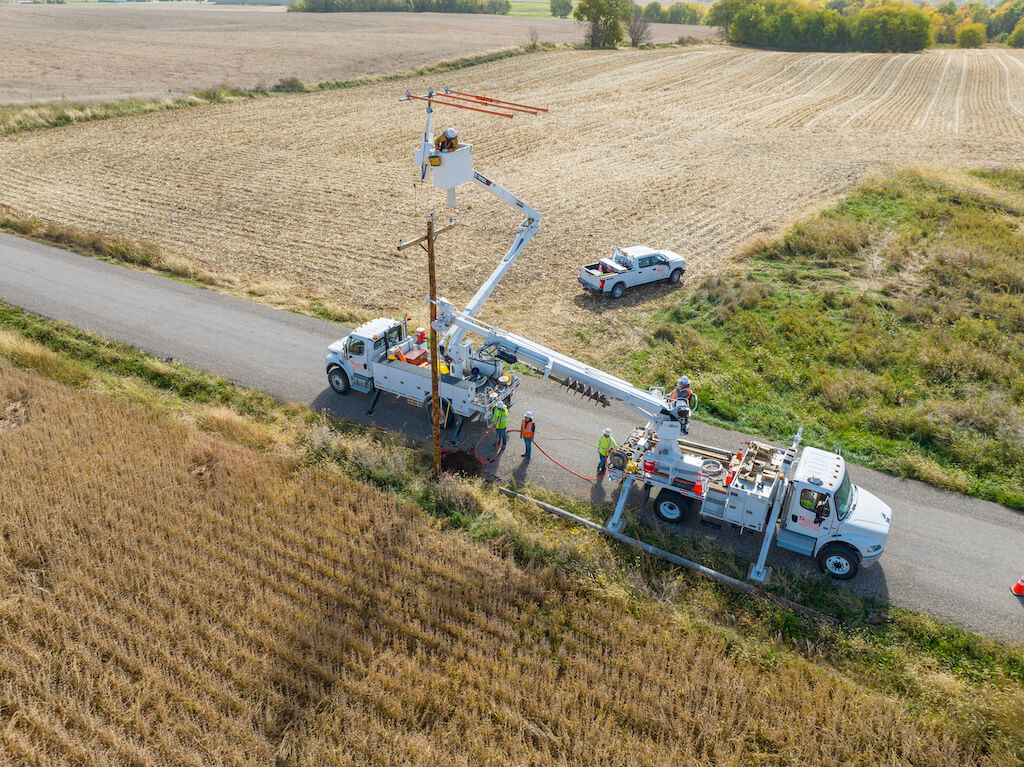GIS is critical for mapping and creating data. For industries that create large amounts of data, like the utility industry, using GIS for utilities has significant benefits.
What is GIS?
Geographic Information Systems (GIS) is a type of data collection that creates, manages, analyzes, and maps data. GIS technology connects your data to a map. It can even integrate location data and geographic data with other types of information.
GIS data provides a foundation for analysis of spatial data. This helps users better understand relationships between objects in a geographic area. These powerful computer systems provide many benefits to a variety of industries. They allow for better communication, increased efficiency, and more informed decision making.
GIS and surveying are often used together to create maps. Drones can be used to take aerial photographs and can be combined with GIS software. This allows the drones to record the data and the GIS software can map the findings in real time. A GIS platform will combine all the data, simulations, and projections into a GIS map.
Digitizing GIS
In this day and age, digitizing your data is extremely important and useful. This process converts your GIS data into a digital format. The data and images are traced as points, polygons, and lines and are displayed in a digital format with map/data layers.
Digitizing your workflows and data management streamlines your operations and standardizes your data into one, easy-to-read format. Data is easier to update and easier to access. In addition, digitizing your map data allows it to be exported in your preferred format.
By digitizing this data, it makes it easier to view, analyze and use it. Building digital interactive maps makes spatial analysis easier and makes this process more efficient. It allows the raster data to be easily viewed and accessed.
Challenges
Maintaining infrastructure and utility maps comes with its own set of challenges. Some common challenges you may be facing are:
- Outdated Utility Maps
Utility companies serve large areas and generate huge amounts of data. Keeping up-to-date utility maps and organized data presents a huge challenge. And, having an outdated map is expensive – it can cause delays, errors, and even a utility strike.
- Limited Internet Access
Utility infrastructure networks often span across huge areas. Many of these areas require your field personnel to travel to remote areas with little to no reliable internet access. Because of this digital applications need to have reliable offline capabilities. Manual recording of data and limited function of these apps can cause inaccuracies and issues when the data needs to be used or downloaded.
- Too Much Data to Process
As utility networks continue to grow, the amount of data that needs to be managed is only getting larger. In the past, most of this data was in paper maps and physical documents.
Today, there is far more data available with drone footage and satellites. Many utility companies are not equipped with the personnel or ability to handle the large amounts of data.
The need for a modern solution and a digital data management system is becoming increasingly important to make sense of all of this data. Check out our suite of software to help you manage all of your data in one place.
Applications of GIS for Utility Mapping
GIS technology is critical in the utility industry for mapping utility infrastructure networks.Taking this technology to the field is critical for building, maintaining, and updating our vast network of underground utilities.
- Utility Asset Management
Utility asset management is the process of tracking and analyzing an asset’s location, lifecycle, performance and maintenance requirements. Effective management of your utility assets means more reliable services and decreased operation costs.
Utilizing GIS tools allow you to streamline your workflows. Collecting, sharing, and organizing your data has never been easier. With cloud-based GIS software, you can update maps in real time and completely eliminate manual data transfer processes.
- Outage Management
GIS can be utilized in the energy sector to decrease and prevent power outages. This technology makes managing outages easier with real time data mapping. Respond faster to outages, find them faster, and forecast potential damages by using GIS.
- Utility Strike Reduction
Accurate GIS maps reduce the chance of utility strikes and cross bore issues. By creating a map of the work area and understanding where underground utilities are located, you can easily track and complete inspections. In the event of a strike, your crews can respond faster.
The Benefits of GIS for Utilities
There are many benefits of using GIS in the utility industry including:
- Better Planning
Using GIS helps you plan ahead. It allows you to make better decisions by giving you an accurate map of the geographic data in the area. It allows for better cost forecasting, reduces potential utility strikes, and increases the efficiency of a project.
- Increased Efficiency
Field operations in the utility space require regular maintenance and routine inspections. The amount of data generated by these operations is huge, especially when combined with budget and staffing restraints. By using GIS and digitizing these large amounts of data, you can create regular maintenance schedules, minimize potential errors, reduce rework, and save time by eliminating the need to manually transfer data.
- Easy and Effective Data Management and Storage
Historically, map data was stored in paper records, which are easily damaged or lost. Because of the sheer volume of data, sustainability of the recordkeeping process becomes a huge issue. Not only that, but paper data can easily be compromised and the chances of human error go up.
By using GIS, managing this large amount of data becomes so much easier. You can automatically sort and organize the data by time, location, and more. The data is searchable so you can find the right historical records when you need them.With cloud-based software, like the OpSource Suite, these records can be accessed when they are needed most.



